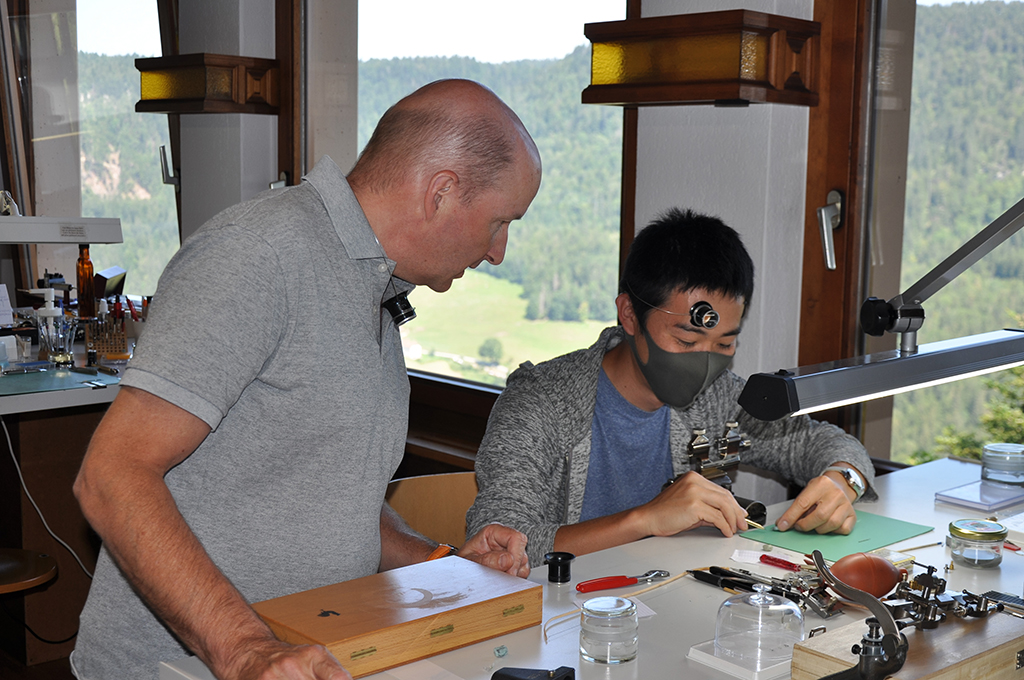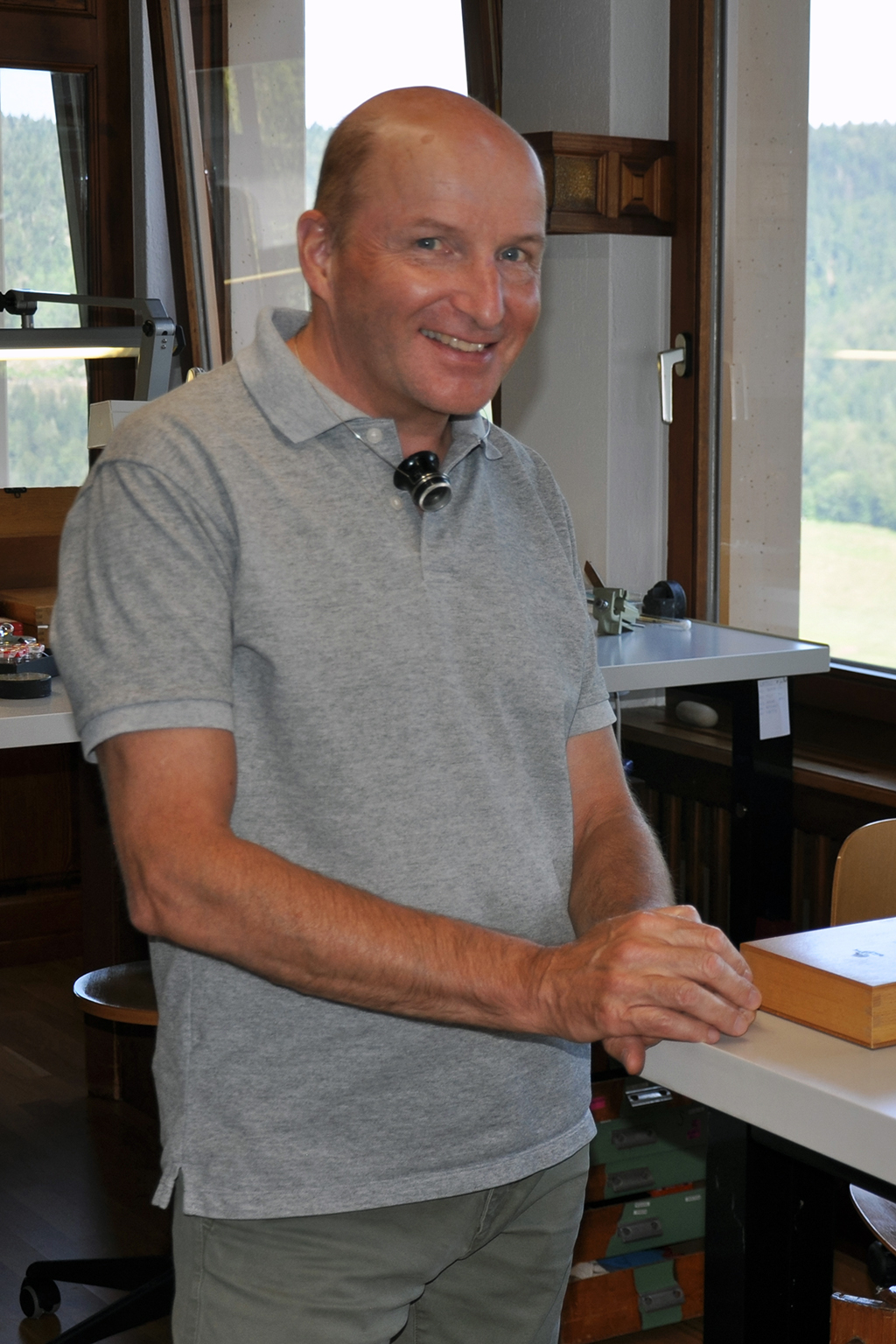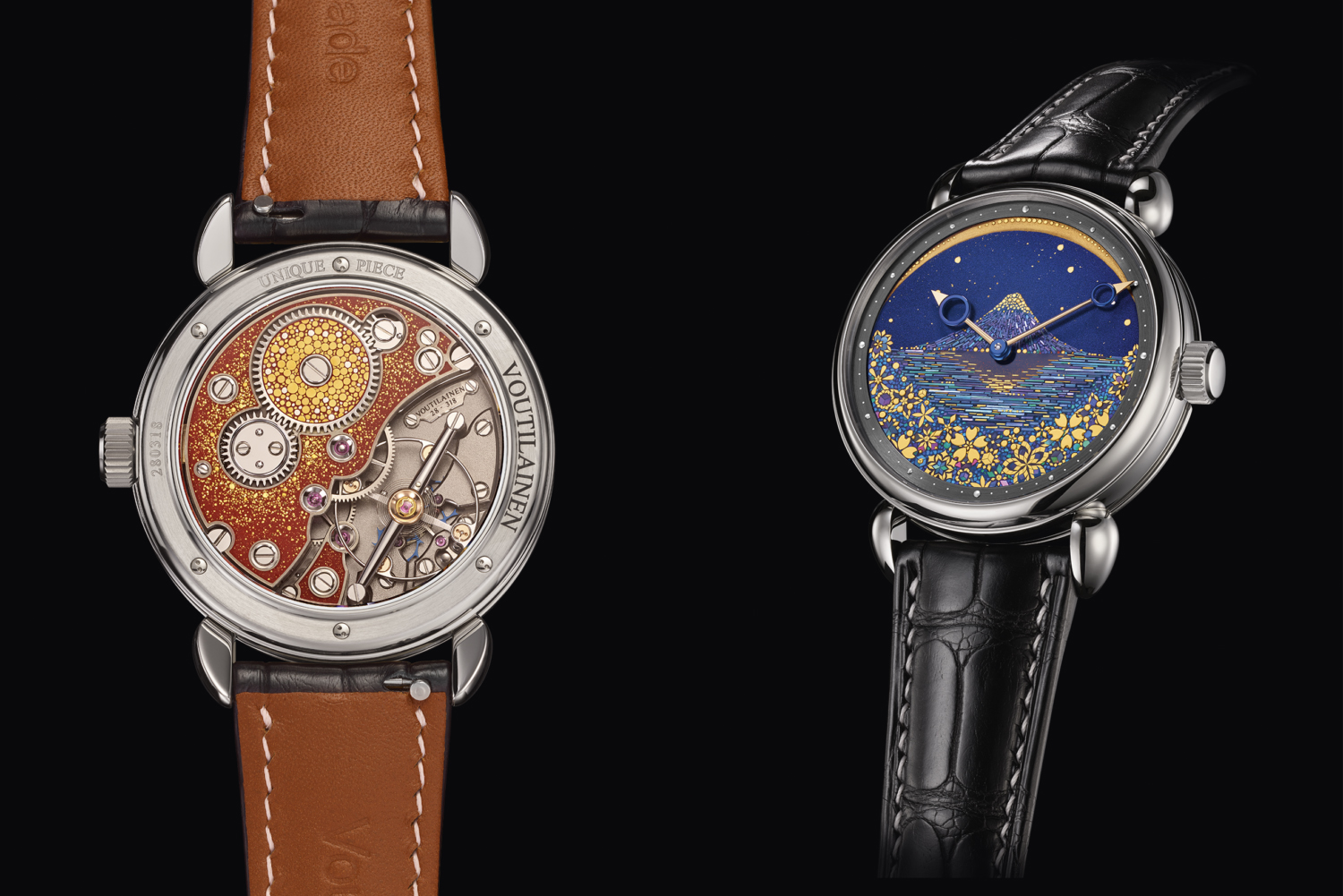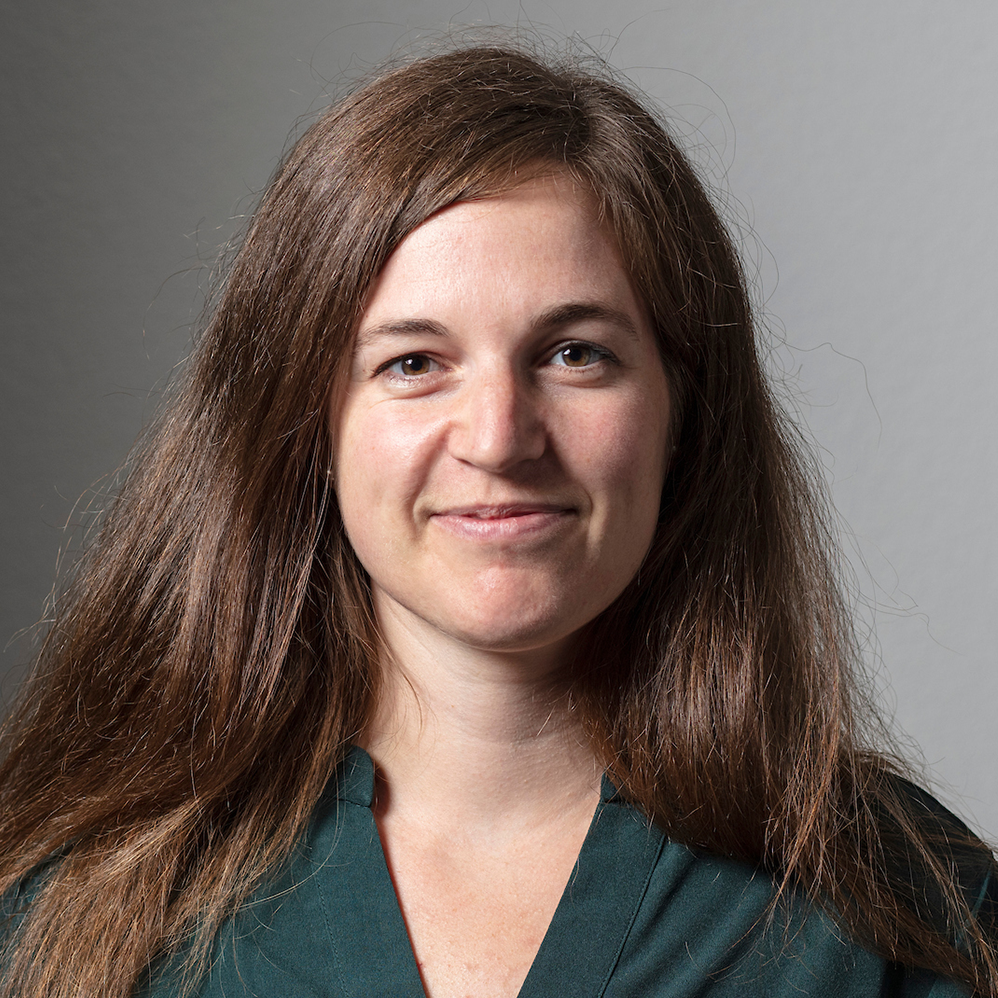Kari Voutilainen – The master watchmaker who came from the North

The Finnish watchmaker Kari Voutilainen, inventor and artisan, revered by collectors around the world, has just opened a new factory in the canton of Neuchâtel.
At the end of a bumpy, winding forest road on the border between canton Neuchâtel and France, the old Chapeau de Napoléon restaurant overlooks the Val-de-Travers region. At an altitude of almost 1,000 metres, high upon a mountain whose very form evokes the cocked hat of the famous French emperor, the view over the village of Fleurier and its renowned watchmaking companies Parmigiani, Chopard and Vaucher is spectacular.
In the parking lot in front of the building he has bought and completely renovated to accommodate his 30 employees, Kari Voutilainen welcomes us with a warm handshake. Wearing a grey polo shirt, eyeglass on his forehead, he is laid back and smiling. Although his name rings like a promise of a Scandinavian blizzard, Voutilainen does not come across as the cold and silent character often associated with northern Europeans.
Voutilainen could in some ways be described as the Lionel Messi of fine watchmaking. To his credit are no fewer than eight prizes at the Geneva Watchmaking Grand Prix, one of the most prestigious award ceremonies in the industry. His timepieces are snapped up around the globe by wealthy collectors, most notably in the United States, and at stratospheric prices. ‘Entry-level’ watches for his eponymous brand will set you back at least 75,000 CHF excluding tax, and the waiting lists are constantly growing.
From Lapland to Switzerland
There was nothing preordained about Voutilainen’s career in fine watchmaking. Born in 1962, the young Kari spent the first 20 years of his life in Kemi, a small port and industrial town in Finnish Lapland which focused on the timber industry. Very early on he realised that he would not spend any longer than necessary at a school desk. “I preferred to tinker and carve pieces of wood, rather than pass my time with my nose in books,” he explains.

Towards the end of compulsory schooling he completed a two-day internship in a watch repair shop run by a friend of his father. “It was a real eye-opener,” he recalls. “At that moment, I understood how people can become religious. It’s difficult to explain, but since that day I have never felt like I’ve been working.” An ironic remark from someone who even today spends up to 80 hours a week, weekends included, in his workshop.
He convinced his father, a rigidly Protestant banker, to enrol him in the prestigious Tapiola watchmaking school near Helsinki. In the evening, after school, he tinkered with old clocks to acquire know-how with worn parts and, after landing his first job in a watch repair shop in Ylitornio, a small town on the Swedish border. His insatiable desire to learn led him to fly to Switzerland, the promised land of fine mechanical watchmaking.
The dream of independence
In 1989 he set his suitcases down for the first time in Neuchâtel, to take a course there at the Swiss watchmaking and development centre, Wostep. “It was the only place in the world that offered courses on complicated watches,” Voutilainen explained. Mechanical watchmaking was slowly regaining its initial nobility after the emergence of quartz technology in the 1970s.
Two meetings would change the course of Voutilainen’s destiny. The first was with Michel Parmigiani, who hired him in his workshop to restore beautiful watch pieces before founding his eponymous watch brand. Voutilainen would remain at Parmigiani for nearly 10 years. It was there he met the man who would become his mentor, Charles Meylan, who bestowed upon him all the secrets of fine watchmaking. “He was the one who encouraged me to make my first pocket watch outside of working hours, at night in my apartment,” Voutilainen recalls.
In 2002, after another three-year stint at Wostep but this time to teach courses on complicated watches, Voutilainen set out as an independent watchmaker, his lifelong dream. Three years later, he caused a sensation at the Basel Watch Fair by presenting the first watch to bear his name, a minute repeater striking the tens and not the quarters as is usually the case.
In order to meet growing demand and free up some time for his wife and two children, Voutilainen, hired other watchmakers and specialised personnel to assist him until he had created his own manufacture, capable of producing almost all the components of its creations with a clean design and meticulous finish.
Autonomy and local production
Since becoming co-owner of the two companies that manufacture the dials and cases of his watches, Voutilainen has afforded himself a luxury that no other master watchmaker can claim: almost total independence from his suppliers. “Today, we make everything ourselves except for three components of the watch movement: the barrel spring, the hairspring and the watch stones,” he explains. “This diversification has been the key to our success. During the pandemic, for example, we escaped the supply problems that hit almost the entire industry.”

And as for the watch accessories there is no question of bringing them in from Asia. He orders his bracelets from a local craftswoman who works for the biggest leather goods brands on the planet. The wooden boxes that host his works of art are made by a carpenter from the local valley.
Motivation and good manners
Technical efficiency, precision, sobriety and extremely meticulous hand finishes are the hallmarks of Voutilainen. However, our host assures us that you don’t need to be gifted to work alongside him: “When I hire a new employee, I test their motivation and their good manners first and foremost,” he said. “Everything else you can learn.”
Voutilainen relies on a team of very young employees, most of whom live in Val-de-Travers or neighbouring France. “They haven’t developed bad habits yet and haven’t learnt to work in silos, as is usually the case in the watch industry,” he says. But despite his views on current watchmaking training and the excessive industrialisation of the sector, Voutilainen remains optimistic about the future of watchmaking craftsmanship.
From Singapore to Val-de-Travers
The transfer of knowledge and the preservation of watchmaking heritage are particularly important to him. “I have nothing to hide, I work in a spirit of total openness with my teams and my clients. There are already enough secrets in the cemeteries,” the Finnish watchmaker says with a smile.
At the Voutilainen manufacture, where 60 to 70 watches are produced each year, every ounce of energy is devoted to creation and craftsmanship. Financial figures of the company are not public and Voutilianen remains elusive as to sales and profits. One third of watches are exported to the United States with the rest sold in Europe and Asia. Only one watch has been sold in South America to date.
Unlike most watch brands, the marketing and communications department accounts for only a tiny fraction of the company’s financial resources, and for good reason: this task is the sole responsibility of the boss! “I receive the clients, I take care of sales and I go in person to the exhibition stands,” he explains.
Such a personalised contact represents a major advantage over the big watch brands and their armada of salespeople dressed to the nines. “Last week I welcomed a client from Singapore,” says Voutilainen. “He was impressed by the calm and the magic of the place. You can imagine the contrast for someone who lives all year round surrounded by buildings and concrete! We can sell a unique story, a meeting, lasting memories. This is our great strength.”
(Translated from French by Adam Szreter)

In compliance with the JTI standards
More: SWI swissinfo.ch certified by the Journalism Trust Initiative










Join the conversation!